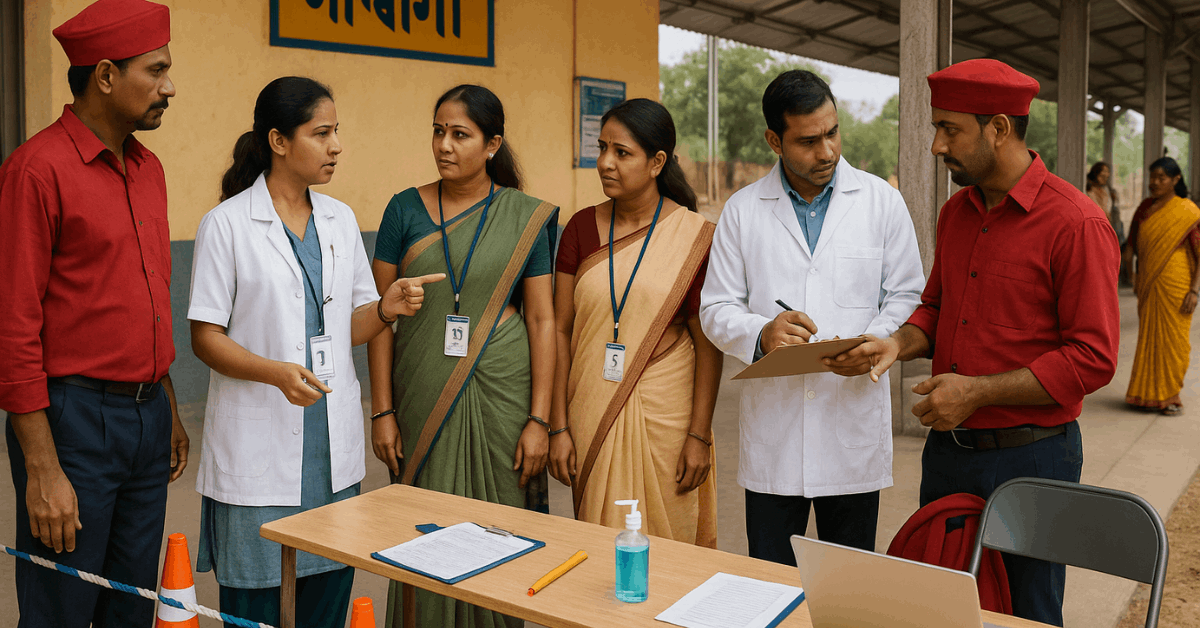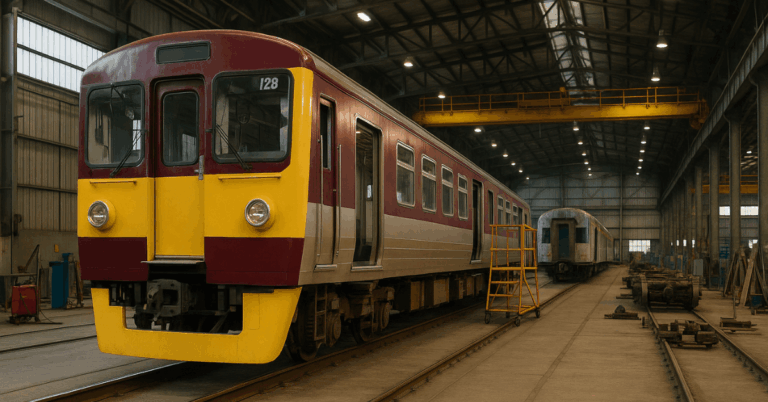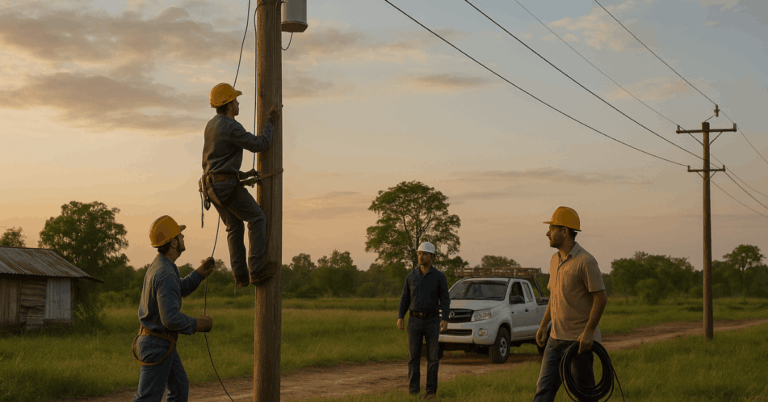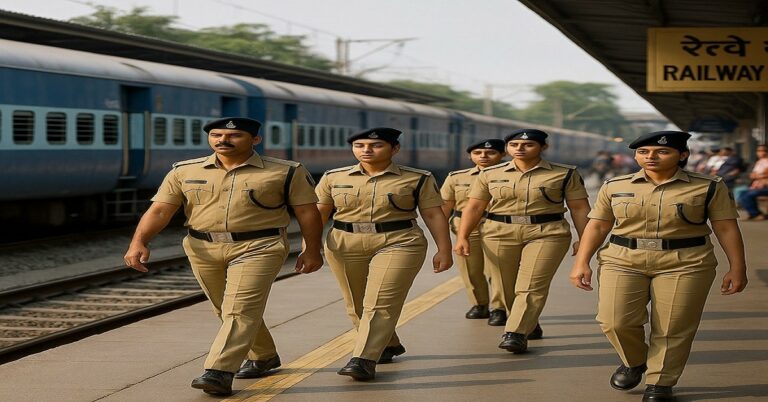Free Medical Camps at Rural Stations close the gap between everyday travel and essential care. Trains remain lifelines in many countries, so turning rural platforms into care points makes practical sense.
Expect basic rural health screening, quick triage, and referral pathways aligned to existing public systems.
Recent nationwide drives in India have even scheduled daily camps at government facilities, underscoring how station-based outreach can scale quickly during focused campaigns.

What These Camps Deliver
Railway concourses and forecourts offer easy access for farmers, vendors, porters, and daily commuters. Camps typically provide vitals checks, anaemia and blood pressure screening, diabetes and TB symptom screening, and women’s health consults, followed by referrals to primary care or district hospitals when required.
Station teams also dispense essential medicines during a free diagnostics camp format, and collect samples for labs when connectivity allows.
When geography is challenging, mobile health units and telemedicine vans extend specialist advice without long-distance travel.
Rural Health Infrastructure: What Exists and What’s Missing
Strong population health depends on functioning facilities, trained staff, essential medicines, and referral systems. Public health standards in India formalize a three-tier rural network, Sub-Centres, Primary Health Centres (PHCs), and Community Health Centres (CHCs), to deliver preventive and basic curative care close to villages.
Camps at stations complement this network by identifying issues earlier, then moving cases into established clinics for follow-up.
Good health is often assessed through trackable indicators:
- infant and maternal mortality,
- nutrition status,
- life expectancy, and the
- burden of communicable and non-communicable diseases.
Station-based screening helps surface undiagnosed hypertension and diabetes, conditions that silently drive stroke and heart disease when left unmanaged.
Early detection at travel hubs reduces missed workdays, lowers emergency admissions, and improves adherence to long-term therapy.
How India Channels Primary Care to Villages
India’s primary-care reboot under the Ayushman Bharat program upgraded Sub-Centres and PHCs into Ayushman Arogya Mandirs (formerly Health and Wellness Centres).
These facilities offer comprehensive primary care, primary health centre access, and expanded services for non-communicable diseases, alongside free essential drugs and diagnostics.
The National Health Mission underpins this architecture by funding free drugs, free diagnostics, and community processes. Its rural and urban sub-missions link facilities, data, and community workers, critical when station events identify high-risk patients who need scheduled follow-up.
Government Programs Fueling Access
Clear public schemes make rural station camps more than one-off events. Coordinated design lets teams screen, enroll, and refer in a single visit while capturing data for continuity of care.
Ayushman Arogya Mandir
Upgraded primary-care sites deliver comprehensive services with free essential drugs and diagnostic tests. Camps at stations can route eligible patients back to these fixed points for continuing care and medication refills.
PM-JAY Hospitalization Cover
For serious conditions identified at camps, Pradhan Mantri Jan Arogya Yojana (PM-JAY) offers cashless hospitalization coverage up to ₹5 lakh per family per year at empanelled hospitals, public or private.
Station counselors can also provide PM-JAY enrollment help where applicable, speeding access to secondary and tertiary care after referral.
National Health Mission & Free Diagnostics
NHM’s Free Diagnostics and Free Drugs initiatives reduce out-of-pocket costs at public facilities. When camps detect anaemia, malaria, or high blood sugar, patients can be referred for confirmatory tests and medicines without financial delay.
“Swasth Nari, Sashakt Parivar” Abhiyan (Sept 17–Oct 2, 2025)
The Government launched a nationwide women-and-children-focused drive to run more than one million daily health camps across all government facilities during this period.
Many districts leveraged transport nodes for awareness and screening, an approach directly compatible with rural stations.
NGO and Faith-Based Partners Bridging Gaps
Local and national organizations often co-run station events, supply clinicians, and provide medicines.
Examples include:
- Americares India Foundation,
- Life Care Foundation,
- PARD INDIA,
- Ratna Nidhi Charitable Trust,
- Satya Foundation,
- SEESHA,
- Shaksham Foundation,
- Switch India, and
- faith-based networks such as Amma.org camps and
- Mother Teresa Health Centre outreach.
Collaboration with railway divisions and district health societies ensures that screening data, referrals, and follow-ups are linked to public systems rather than remaining fragmented.
Ebendavid Charities’ Model
Ebendavid Charities’ model, free consultations, medicines, and structured referral for surgery where needed, illustrates a practical template for station-adjacent outreach.
Programs that pair camp findings with scheduled follow-ups and medicine support deliver better outcomes, especially for chronic diseases that require monthly touchpoints.
Case Snapshot: Railway Station Outreach
Indian Railways divisions periodically run medical check-ups for vendors, porters, cleaning staff, and sometimes passengers on the premises.
Recent examples include a free medical camp at Pathankot Railway Station during Swachh Bharat Abhiyan activities, and health check-ups for cleaning staff organized by Metro Railway, Kolkata.
These railway station outreach efforts show how transport authorities can host targeted screening, stabilize staff health, and broadcast preventive messages to travelers without disrupting operations.
How to Find a Camp
Station camps are often publicized locally, so a few steps keep plans efficient and travel costs low.
- Check board announcements at rural stations, panchayat offices, and nearby Ayushman Arogya Mandirs; many teams post dates one to two weeks ahead.
- Ask ASHA worker support teams in the village; ASHAs coordinate mobilization and can confirm the eligibility documents needed at the venue.
- Call the nearest PHC or Community Health Centre to confirm schedules, locations, and services available during the day.
- Visit district health social feeds and NGO pages; many publish exact station names, timings, and specialist rosters.
- Bring previous prescriptions and any PM-JAY card details in case a hospital referral is required on the spot.
What to Bring and How to Prepare
Carry an ID document, prior prescriptions, and recent lab reports if available. Keep a written list of current medicines and dosages, including over-the-counter items and supplements.
Wear clothing that allows blood-pressure measurement and glucose sampling without delay.
Plan for short waiting times and follow the queue process so screening, counseling, and referral can happen in one uninterrupted flow.

Data Privacy and Consent at Camps
Protecting personal health information matters at station events where registration is often digital.
India’s Digital Personal Data Protection Act, 2023 requires lawful processing of digital personal data, informed consent, and easy withdrawal of consent; organizers should clearly state what data is collected, how it will be used, and how to access or correct records later.
Where data is digitized for Ayushman Bharat Digital Mission health records (ABHA), teams should explain the benefits and help residents manage sharing preferences.
Track Results and Improve
Short feedback loops help districts refine which services to run at stations and when footfall is highest.
| Metric to Monitor | How It’s Verified |
| Number screened at each station | Organizer log and station register |
| Share referred to PHC/CHC | PHC/CHC referral countersignature per IPHS workflow |
| PM-JAY pre-authorization issued | NHA PM-JAY portal data |
| Proportion receiving free tests/medicines | NHM Free Diagnostics/Drugs facility records |
| ABHA creation and record linkages | ABDM dashboard and facility logs |
Citing standard sources ensures consistent auditing: MoHFW IPHS for referral pathways, NHA for PM-JAY coverage events, NHM for free diagnostics/drugs, and ABDM for digital records.
Conclusion
Rural stations are practical venues for quick rural health screening, especially during national health drives and seasonal travel peaks.
Pairing station camps with Ayushman Arogya Mandirs, NHM diagnostics, and PM-JAY referrals turns a brief interaction into a full care pathway.
Add telemedicine vans for specialist input, reinforce continuity through nearby PHCs, and maintain clear consent practices to protect privacy and trust.









